
Donna Lewis: “Music is such a powerful thing to bring people together, and this is just my story.” Photo: Bon Jane
The Welsh singer-songwriter has channelled her battle against breast cancer into the personal and powerful album ’Rooms With A View’
Donna Lewis, the celebrated Welsh singer-songwriter, catapulted to fame with her iconic 1996 hit I Love You Always Forever, officially one of the Top 100 songs of the 1990s according to US Billboard. While working on the 25th anniversary celebrations of the single, Lewis was diagnosed with breast cancer and plans were put on hold. Instead, in collaboration with the electronic artist Holmes Ives, she channelled what she was going through into new music.
Those songs, each a different vignette of her battle against cancer, can be heard on the album Rooms With A View. With its authentic portrayal of Lewis’s experience, the 10 tracks are both poignant and uplifting, providing comfort and understanding for those going through similar struggles and a window into that world for those on the outside. During our recent chat with Lewis we found out all about the record’s creation and how she brought this most personal chapter to life…
Read how Donna Lewis wrote ‘I Love You Always Forever’ in our magazine
We could hear a little Portishead and Massive Attack in the new record, was that intentional?
“It wasn’t in my mind but I actually love that kind of style. It’s interesting because I’ve always wanted to do a record like that. I love Portishead, I love Massive Attack, and I’ve dabbled with a few collaborations in that in that vein, and I love that kind of thing.
“The way this came about, working with Holmes, who is very much in that kind of genre; he had remixed one of my piano vocal songs, I Told You So, a good few years back, which I loved. Then, out of the blue, when I was going through all this cancer treatment, he sent me a bunch of tracks and said, ‘Do you fancy collaborating on any of these? Do any of these inspire you?’
“They were really cool, lo-fi kind of stuff, and they were full of these dark soundscapes. Straightaway, I could hear so much stuff and I started recording ideas on my phone. That’s how The Messenger started, the first track on this album. I started doing some vocals and sent it back to him, and he loved it. And that’s how it all started. So the whole record became this kind of style.”
So The Messenger was the song that unlocked the rest?
“It really did. I was going through my cancer treatment at the time, and I really didn’t want to write about it. I first put that track on and I had all my journals open at the time. Of course, it was all about what I was going through, my feelings and that kind of thing. I remember writing something like, ‘Cancer is this uninvited messenger, this unexpected, unwelcome thing that comes into your life.’
“I thought that was a really good place to start. So I ended up writing about my diagnosis and the start of my treatment in that song. I didn’t even tell Holmes what it was about. So we started with that track, and I absolutely loved it. He lives in Mexico City and I live here [Upstate New York], we haven’t even met in person. We’ve tried on numerous occasions, but it hasn’t happened yet. He’s working in his studio and I’m working in mine, and I’m doing all the vocals and sending my stems back to him.
“The Messenger became this beautiful tribe that we created together. Then I started on the others and that’s how it progressed. And it was the third song in, which I think was The Imposter, when I told him, ‘I don’t know why I’m writing about all this, but this is what it’s about.’ First of all it was just going to be an EP of a bunch of songs. I think we completed about four or five songs and then, as it progressed, we thought we may as well do 10 songs and make it an album. It’s 10 chapters of my year-long journey.
It seems incredible that Holmes didn’t know what you were going through and yet the music is such a great fit for the lyrics…
“He sent me about 10 instrumental tracks at first, just to see what inspired me. There were about three or four of those, out of that collection, that I really latched onto and loved. They were all in that same vibe and same vein. By the time I’d finished some vocals and sent him stems, he sent another track back to me that was totally changed, you know, he really went 360 degrees and did something very different, which was fantastic. So the whole record is very much like that, apart from the one that I wrote with my son [Rooms With A View], that’s kind of more acoustic, bass, piano and we used real strings.”
What was it about the tracks that triggered a melody or a lyric?
“First of all, it was the emotion from that track. Something triggered something. Then it’s mostly always melody with me. Straightaway, I think, ‘Oh my god, I love this and I can hear something.’ That’s why I always like to record on my little phone memos and get ideas down. So it is the emotion, but also the melody. It triggers these melodies. It’s always the melodies first.”

Donna Lewis: “As long as the emotion is captured, it’s okay if there’s a few little mistakes and things aren’t quite right.” Photo: Andy Earle
Do you hum nonsense words and sounds and then piece lyrics over them?
“Sometimes it works like that. I have done that many times because I always say nonsense. I think a lot of writers do. Anything. ‘Oh, I hate that. I love that sentence. I have no idea what that means. That’s kind of cool.’ Then you’ll craft the song, you think, ‘That’s an interesting subject, I can start thinking about that and craft around that.’
“But, you know, I think I did come up with certain words. The Messenger was one of those and then I go back to my journals and then I figure out. Corridors was one, when we were writing that I just came up with ‘Eileen’. I was thinking about my nurse at the hospital. The whole thing was all about her. Eileen was the first thing that came to me, she was my girl and I wrote that about about her.”
Were your journals already quite poetic or did you have to do some crafting from them?
“There was some crafting, but there are some moments that seem a little bit more poetic. I have moments where I write about eight lines and it’s kind of like a little bit of poetry, but often it’s just thoughts and feelings. So I will take that and then craft it.
“The Mark is all about my radiation. You are marked with four tattoos before they radiate you. That was a great title for that song. I remember writing things like, ‘Sounds to words,’ because that whole experience was, you’re lying on that table, it’s very kind of meditative in a way, and then you’re listening to commands: when to breathe in, when to breathe out. Then, once I had an idea for that, I could craft it into a song.
“But I love to improvise when I’m recording my vocals and when I’m working on a song. I record everything. Firstly, because as we all know, sometimes those magic moments just happen and you really want to keep it. A lot of the stuff comes from those improvised moments, especially some of the textures of my vocals. Some of the backing vocals that I do will often come from improvising and then figuring out. I love that moment.”
Can you tell us a little more about the writing process?
“What I’d normally do, I was opening those instrumental tracks, and I’m just listening first, then throwing down some ideas on my phone. It could be some lyrics or some melodic ideas. Some of those songs were very strong to me, and I thought, ‘I’m just gonna go to the mic now and I want to record something because this is inspiring to me.’ Others needed a little bit of work.
“Then I will go and start recording, and studying, I have my notes in front of me. And just do about five or six passes. Some of it might be rubbish, but some of it’s like a little jam. Then I’ll sit back and just figure out, ‘Okay, I’m really going to figure out the melody here,’ and then I will go and do another few takes.”
Do you like the fact that you can work on a song and infinitum until you think it’s done? Or are you keen to get it finished?
“I can be very obsessive. What was nice working with Holmes is that I could be in charge of all my own vocals. I like crafting the whole thing and so I do like editing. Once I start editing and I’ve got my main lead, then I’m looking at what I can do texture-wise, and anything else. I kind of do everything I can that I hear in my head that I want to happen.
“I’ll do all those stems and a lot of them, he just used my effects. For some of them, he would experiment a bit more, doing different things. I’ll work on it for hours. It’s not trying to get the best lead vocal, because I really feel that after about six takes you often have the one that’s the main vocal, and then you can edit it in a few places. The things that take a while are the little textures in the backing vocals, because I do like to mess around with them and move things around. Or there might be a breath moment of a note that I really love and then I want to effect it somehow. So I do enjoy that, a little bit obsessively.”
How do you know when you reach the point where it’s finished?
“Yes, that’s a good question. I don’t know, something is in your gut that you just know that it’s done. It’s interesting, over the years, when I was doing I Love You Always Forever, I was very much a perfectionist. I still am, but after doing a jazz record and doing that live, I have learned to try and let go a little and go with the flow. When you’re working with jazz musicians, it’s different every night and you’ve just got to go with it. That was a good experience for me.
“So I have learned over the years that you could just go on and on and perfect and perfect, but I feel, as long as the emotion is captured, it’s okay if there’s a few little mistakes and things aren’t quite right – as long as it sounds right in the gut.”

Donna Lewis: “We would do whatever was right for the song at the end of the day.” Photo: Bon Jane
Does having a collaborator also help, because you don’t want them to be waiting forever for you to do your bit?
“Exactly. It was great with Holmes because we work really well together and we’re both hard workers. So you know, once we’re in a track, I don’t like to leave it. Some people like to leave it on the side and maybe work on something else. I kind of like to complete it and not leave it unfinished. So we worked well together in that in that sense.”
Did either of you have veto powers over what the other one was doing? Could he say if he didn’t like something about your lyrics?
“Yeah, there was a couple of moments like that, you know. I remember with Headlights he said, ‘I’m not really sure about those lyrics.’ I actually went back and rewrote a few things and then I went back to the original things and I had to tell him exactly what it was all about, Then that kind of made sense to him.
“I think there was a moment in The Imposter where, when he first sent me that track, I wasn’t that keen on the chorus chords. After the verses, I heard this particular melody in my head. So I went to the piano and I said, ‘Can you put these chords in, that’s gonna be really good for me to get this chorus melody?’ and he was cool. I mean, we were very good about working with each other. If one of us had a suggestion, we would do it. We would do whatever was right for the song at the end of the day.”
And what do these songs mean to you now that they’re out in the world?
“This one is a very personal record, lyric-wise, because it is about my story. It’s interesting, I was gonna come out with a very different record. We had these plans to release the unreleased material but then, when this started to happen, I just felt I needed to put this out now because this is a story that just happened to me and I need to put it out in the world.
“People that have heard it, people going through the same thing, they found it very comforting, because it’s making people feel less alone going through that. Having a cancer diagnosis is overwhelming and scary but then once you get on the treadmill of the treatment, you just run with it and go with it. It is the beginning part which is so scary. People that hear the songs say they have really resonated with them.”
Were there songs by other people that you found comforting during that time?
You know, I’ve got a diverse collection. I was really into Gracie Abrams. She’s a singer-songwriter over here. I really loved her stuff. It was very intimate and really beautifully done – very sparse. So that was quite nice. And then I listened to a lot of orchestral music. My son is studying to score in film, and so he would send me stuff that he’s working on, it was nice. It was just like a complete change from what we were doing. And so that was good for me, something that was totally different.”
And what do you hope the listener takes away from the songs on Rooms With A View?
“Music is such a powerful thing to bring people together, and this is just my story. I never intended to write about it, but I felt that it was important for me to share this with people. I talked to people that had already gone through what I’ve gone through and that gave me this positive outlook and strength to get through it, because it is not easy. So I feel if people hear the songs, they can relate to everyone on the record because they all relate to that: the chemo, the radiation, the surgery, the injections, the thoughts and the feelings. I think if they can listen to that, and just feel that they’re not alone, and they can get through it.
“I do talk to people, when someone’s going through it, like people did for me. It’s so nice to have somebody that’s already gone through that, but also to have some music to listen to that tells the same story and makes you feel you know, ‘I’m going to be okay. I’m gonna get this.’ That’s what I hope. And as a songwriter anyway, I just love making music. This was my therapy. It was my healing journey and I think that’s what songs do for people.”
You’re also an ambassador for The American Cancer Society/Making Strides Against Breast Cancer, what can people do who want to help?
“It’s really spreading that awareness. The whole thing with breast cancer, it’s spreading awareness. It’s the whole screening thing. I did not go for my screening because it was COVID and that was my mistake.”






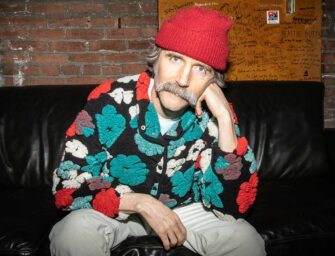
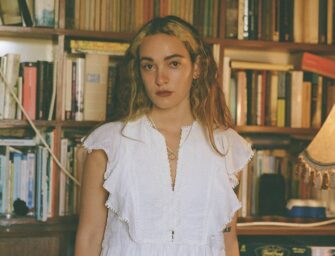
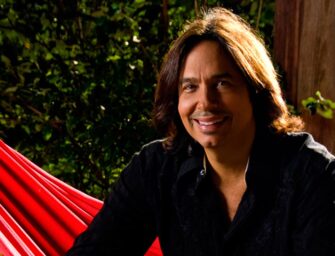
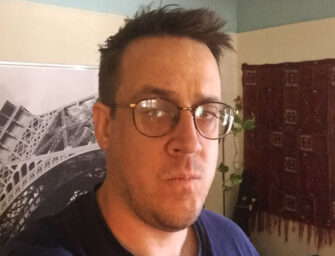



















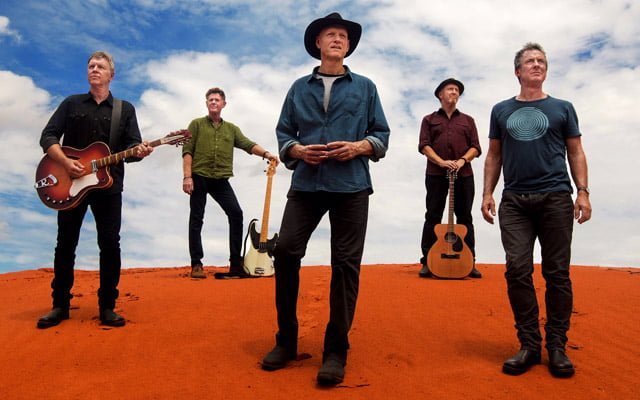






Related Articles